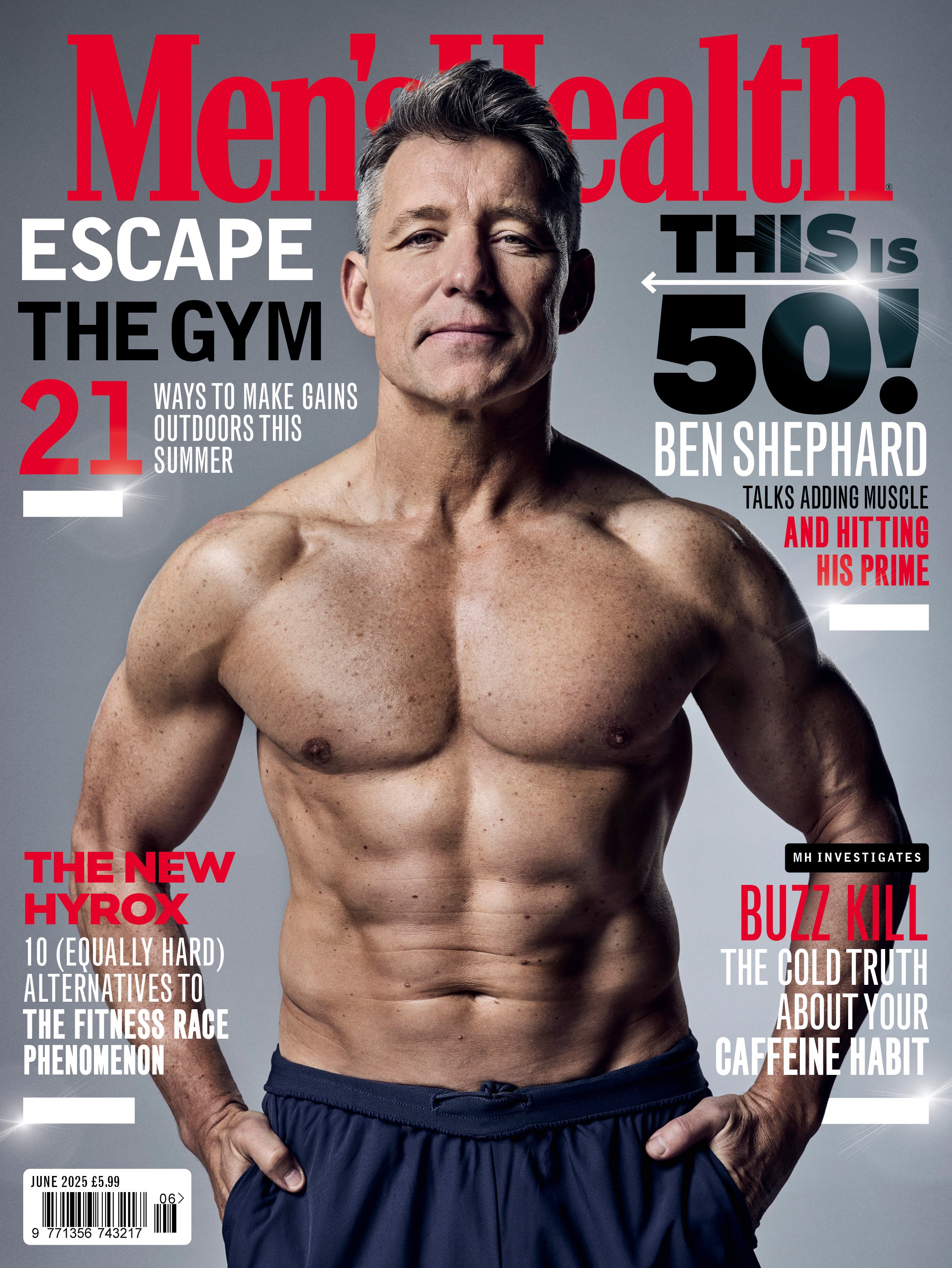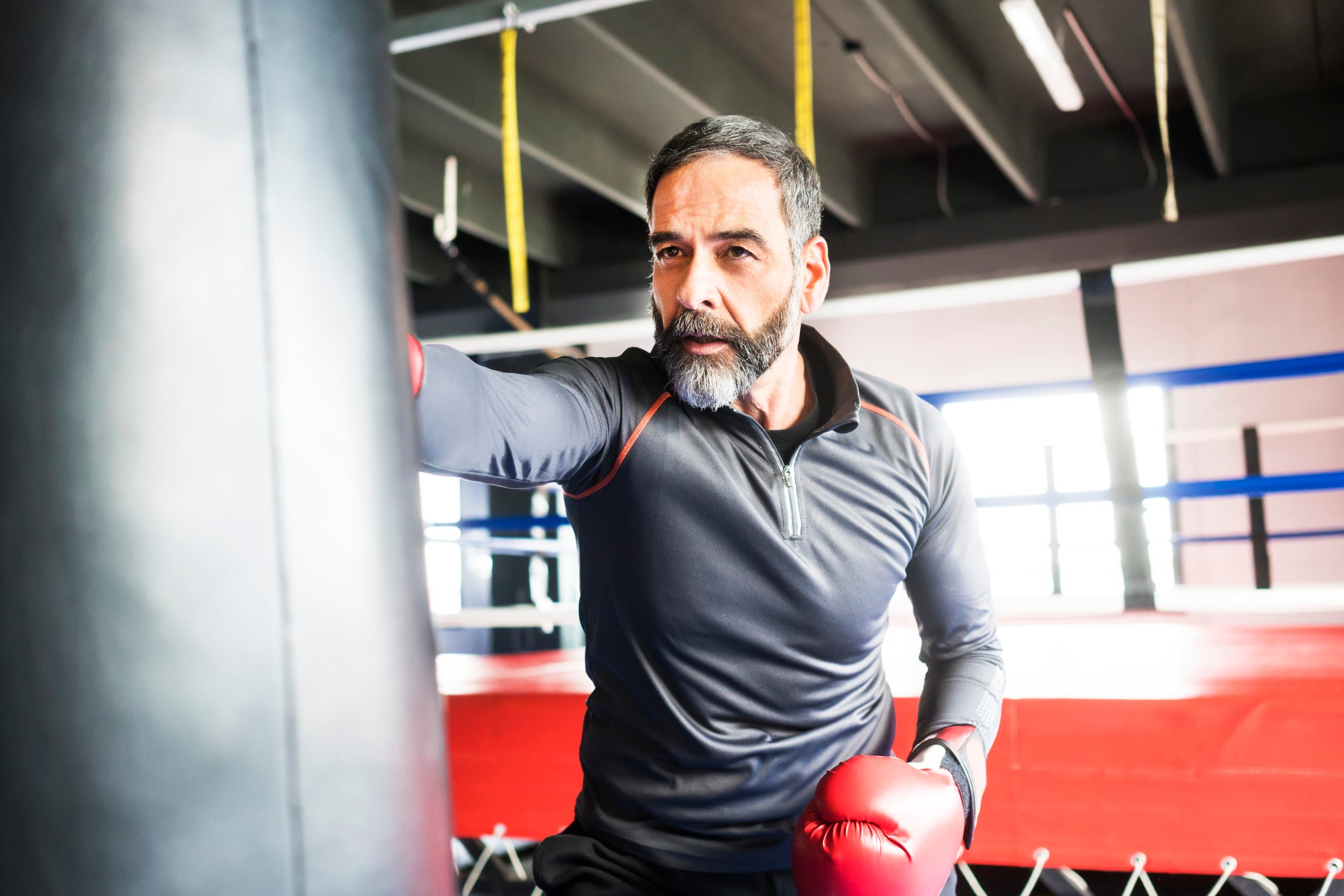How build lean muscle and lose belly fat in your fifties
As TV presenter Ben Shephard shows off his toned torso in ‘Men’s Health’ magazine, fitness writer Joel Snape considers how men who might not have the same time and resources can still maximise results (and minimise injury risk)

Can you really be in the best shape of your life in your fifth decade? The obvious answer is yes, if you weren’t in great shape before, but the slightly less obvious answer is: yes, if you’re Ben Shephard.
Making his second appearance on the cover of Men’s Health 13 years after the first one, the This Morning presenter looks more muscular (and only slightly less lean) at 50 than he did at 37. Shephard credits his physique to planning, protein and consistency, with four strength sessions and plenty of “lung-busting” cardio planned out by trainer Steve Coleman – and, to be clear, he’s working with a capacity for training that’s been built up over years of hard work.
But if you’re a non-celebrity with the typical array of commitments, how fit can you really be in your fifties? Is trying to recapture your youthful best just a fast track to frustration? And how should you change your training to maximise your results while minimising your injury risk? Let’s dive right in – after some light stretching, obviously.
One of the biggest challenges for both men and women in their fifties are changing hormone levels, which can hamper training and recovery. Menopause in women causes a sharp drop in estrogen and progesterone, leading to the loss of lean muscle mass, reduced bone density and increased abdominal fat storage, alongside sleep issues and energy level fluctuations.
For men, the issue is testosterone: levels start to decline about 1 per cent a year from the age of 30 to 40, though studies suggest that fatherhood also correlates with a drop in testosterone too. Muscle loss, or sarcopenia, also starts after we hit 30, our tendons start to lose some of their elasticity, and joints start to show signs of wear and tear – all of which can make injuries more likely, and less manageable.
If you’ve twisted a knee at five-a-side or been sitting with bad posture for years, it’s in our forties and fifties where that starts to add up, leading to surgery or pain when we move – making us more cautious about the sorts of physical challenges that we’ll actually tackle.
More than anything, it’s this that causes slowing of the metabolism as you age: with less muscle mass to burn calories, and less everyday movement going on (whether because you’ve given up rugby or because you don’t go dancing any more), you tend to put on fat even if you’re eating the same as you always have.
On top of all that, the chronic stresses of everyday life can elevate cortisol levels (leading to increased fat storage around your midriff), and interfere with your sleep (affecting recovery). It’s a bleak picture, but some men – like Shephard – seem able to redraw it. So how can you do the same? Here’s the plan.

Maintain, don’t gain
The first thing to say is that it’s a lot easier to hold onto all of our youthful attributes – appreciable amounts of muscle, a fast metabolism, and healthy joints – than it is to try and get them for the first time in the second half of your life. So, the most important thing you can do is to find some sustainable fitness habits as soon as you can and keep them up – whether you’re in your twenties, forties, or sixties.
That ought to mean doing some sort of strength training and some sort of cardio every week. Even a couple of 30-minute strength sessions a week can be enough to keep you in shape, while cardio is the gift that keeps on giving – you should do as much as you can (we’ll get to how intense that should be shortly).
Finally, you should definitely include some sort of mobility work in your regimen every week – that could be a few dynamic stretches around your workouts (the Cossack squat is a great bang-for-your-buck option), or a dedicated session like yoga or Pilates.
Don’t get injured
This gets much more important as you get older and don’t bounce back from injuries as quickly. One key is to warm up – a good warmup gradually increases heart rate and circulation, which can suffer from age, while also raising muscle temperature, which improves elasticity and efficiency. It also activates your nervous system, enhancing your coordination and reducing your risk of taking a tumble. It doesn’t have to be too complicated – if your gym has one, the SkiErg is a great choice, as it gets your blood flowing, uses all your large muscle groups, warms up your shoulders and helps your coordination.

The second part of not getting injured is choosing moves that are low-risk, high-reward. For instance, I don’t bench press any more – it’s stressful on the shoulders, easy to overload, and it doesn’t do much for your chest and arms that a not-too-serious lifter can’t get from different types of press-ups. In general, try to avoid high-impact moves (the odd box jump is fine, but don’t ping your Achilles tendon by doing 50 of them in one workout), and forget the one-rep maxes. But that said…
Lift weights
“This is really what makes the difference in how you look,” says Sarah Lindsay, CEO of Roar Fitness. “The stronger you are, the more intensity you can create, and the more stimulus you're going to be providing to your muscles. Learn to lift heavy, and track your progress – if the weights go up, that’s very motivating.”
If you’re pressed for time on strength training, don’t waste any of it on barbell curls or situps: spend as much of it as possible on exercises that work multiple areas of your body at once. Press-ups work your shoulders and core as well as your chest – goblet squats work all of your leg muscles, but also test your biceps. Aim to use a weight that’s moderately challenging for 5-10 repetitions, and do two or three sets.

Do a lot of Nepa (non-exercise physical activity)
This basically means all of the things you wouldn’t get changed to go and do: walking your kids to school or doing the gardening are both Nepa, and a key benefit of both is that they’re not difficult to do, and aren’t likely to lead to food cravings later in the day (unlike, say, high-intensity cardio). If you want to, you can also add a bit of difficulty to your everyday movements – say, by throwing a couple of books in a rucksack when you take the dog for a walk. It definitely adds up.
Eat well – most of the time
One of the simplest ways is to aim to eat well 80 per cent of the time (and not worry too much the rest of the time). You’ll eat roughly 21 meals a week – so around 17 of those should be reasonably “healthy”. What’s healthy? A decent chunk of protein – around 20-30g – is a good start, alongside a bit of veg (or fruit, but not every time). And don’t ignore carbs! “Eat for energy so that you can train hard, and to recover from your workout, and so that your next training session is good,” says Lindsay. “If you’re eating with performance in mind, you won’t go far wrong.”
…and don’t look back
If you looked good, lifted big or ran fast in your twenties and thirties, it’s tempting to tell yourself you can recapture those glory days – but going hard in every workout in the attempt is a shortcut to frustration and injuries. Avoid rear-view mirror syndrome by re-framing your efforts as something you’re doing for the future: you’re aiming to live a healthy, active life for as long as you can, not beat your old Parkrun PB. And unless you’re starting an Insta account, being in good shape for your fifties is a great place to be.



Join our commenting forum
Join thought-provoking conversations, follow other Independent readers and see their replies
Comments